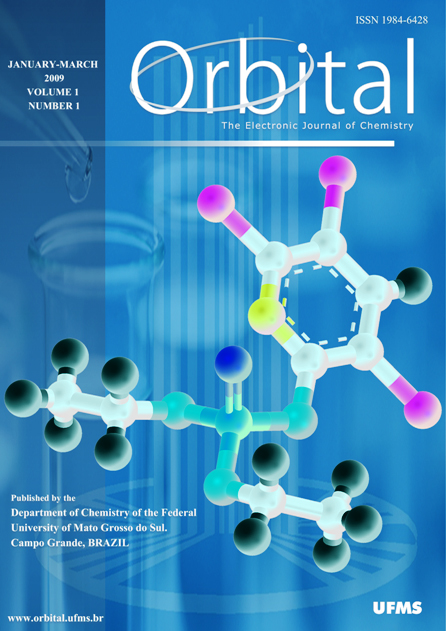Degradation dynamics and risk assessment of chlorpyriphos in/on cabbage under different culinary processes
Copyright (c) 2009 Orbital: The Electronic Journal of Chemistry

This work is licensed under a Creative Commons Attribution-NonCommercial-NoDerivatives 4.0 International License.
Abstract
Chlorpyriphos 20 EC was applied at the rate of 500 g a.i. ha-1 in Cabbage heads and the samples harvested at intervals of 0 (2 hours after application), 1 and 7 days after application. The calculated half-life value and safe waiting period (8.75 and 45.29 days respectively), indicated its longer persistence. Thus, to reduce the safe waiting period, efforts were made to decontaminate the Chlorpyriphos residue from Cabbage head by various household preparations (viz. washing, cooking, washing plus cooking, salt water dipping, dipping in boiled salt water, dipping in detergent solution and dipping in boiled detergent solution). Statistical analysis of the data using Duncan´s Multiple Range Test revealed that various household processing substantially reduced the residue of Chlorpyriphos in Cabbage heads in the range of 27.89-73.32 % but none were able to satisfactorily bring down the residue below the tolerance level of 0.05 mg kg-1.

